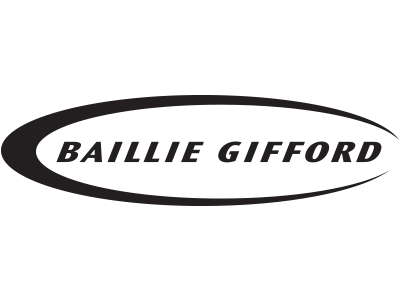This fund is a great way to invest in disruptive businesses with strong growth prospects in the world’s largest stock market
The managers benefit from the research carried out by a large bank of analysts
The fund has typically performed well when its growth-style of investing has been in favour.
This fund features on our Wealth Shortlist of funds chosen by our analysts for their long-term performance potential
How it fits into a portfolio
Baillie Gifford American aims to grow an investment over the long term. The manager’s growth style of investing aims to benefit from investing in exceptional growth businesses and holding them for long enough to reap the rewards.
We think this fund could work well in a portfolio with little exposure to the US, invested for long-term growth. Its focus on large companies means it could also sit well alongside a US equity fund focused on medium-sized or higher-risk smaller companies, or a US fund with a value bias.
Manager
The team behind the fund is made up of four talented investors. Tom Slater joined Baillie Gifford in 2000 and has risen up the ranks to become Head of US Equities. Slater is also manager of Scottish Mortgage Investment Trust and has been co-manager of this fund since 2016. Gary Robinson has been with Baillie Gifford since 2003 and has experience of working in their Japanese, UK, and European equity teams prior to joining the US equity team. Robinson has been co-manager of this fund since 2014.
Kirsty Gibson joined Baillie Gifford after graduating in 2012 and has been a co-manager of the fund since the start of 2018. Dave Bujnowski is the fourth and final co-manager of the fund. After previously working for UBS and Coburn Ventures he joined Baillie Gifford in December 2018 initially as an analyst. During his time at Coburn Ventures, Bujnowski provided research for investors, including Baillie Gifford. As a result, he was familiar with the culture and investing philosophy at the company ahead of joining.
In May 2020, 17 months after joining Baillie Gifford, he was promoted to co-manager with the ability to make investment decisions on the fund. Bujnowski continues to be based in New York but remains in close and regular contact with the rest of the team, who are based in Edinburgh. The managers also have access to a wider team who spend time researching US companies, so we think they are well resourced to focus on the job in hand.
Process
The managers invest in companies with high growth potential that they think could be capable of delivering exceptional returns over the long run. They believe that companies with resilient business models make for good long-term investments and that corporate culture can be a key component of company performance and ultimately investor returns, although of course there are no guarantees.
Culture is difficult to measure and capture. But the managers believe it’s one of the most underappreciated drivers of long-term returns. Companies with a strong culture are often adaptable, durable and willing to invest for the future at the expense of short-term profits. And although there’s no exact science, they believe that it’s these kinds of companies that are often the ones to really deliver on their vision and purpose.
The managers spend a lot of time thinking about industry dynamics and developing trends across the economy, preferring to think of their investments in themes rather than sectors. They’ve grouped them into nine distinct themes, 27.8% of the fund is invested in the future of commerce, 20.4% in battle for our attention and 19.7% in new enterprise. Many of these businesses disrupt old ways of doing things. In the future of commerce category, the trend the fund has the largest exposure to, you’ll find businesses like e-commerce platforms Shopify and Wayfair.
Founder involvement is another element that the managers view positively. They believe these individuals, who usually still have much of their wealth tied up in the business, often possess the strong vision that’s required to continue growing the company. The managers believe few companies are capable of delivering exceptional returns over the long run, so they prefer to run a relatively concentrated fund of between 30 and 50 companies. This means each one can contribute significantly to returns, although this approach increases risk. This concentrated approach combined with the type of companies the managers invest in can lead the fund to have larger ups and downs compared to peers. The fund also has a small amount invested in smaller companies, which are higher risk.
Over the last year the managers have made several changes to the portfolio. Educational technology company Chegg was sold. The team believed that Chegg was too slow to transition to AI whereas competitors were quicker to move. They also sold software company HasiCorp after it was subject to a takeover by IBM, and cloud computing company Twilio.
They added a number of companies to the portfolio too, mainly in the healthcare sector with the additions of Insulet, Inspire, Tempus AI and Guardant Health. They did also added payment service company Block and consumer company Yeti.
Culture
Baillie Gifford is an independent private partnership founded in 1908. It's owned by partners who work full time at the firm. This ownership structure means senior managers have a vested interest in the company, and its funds, performing well. Three of the fund’s co-managers, Tom Slater, Dave Bujnowski and Gary Robinson are partners at Baillie Gifford. We think this has helped cultivate a culture with a long-term focus, where investors' interests are at the centre of decision making. We also like that fund managers are incentivised in a way that aligns their interests with those of long-term investors and should retain talented managers.
ESG Integration
All of Baillie Gifford’s funds are run with a long-term investment horizon in mind. The firm’s fund managers see themselves as long-term owners of a business, not short-term renters. So, assessing whether society will support, or at the very least, tolerate, the business model over the long term, and whether management will act as good stewards of shareholders’ capital is an important part of the investment process.
Dedicated ESG analysts sit with and report into their respective investment teams, and the firm’s ESG efforts are supported by a dedicated Climate team, an ESG Core team (responsible for voting operations, ESG data and ESG-related client communications). Individual investment teams are responsible for voting decisions and engagement for the companies they invest in. Investment in controversial weapons and cannabis is prohibited across the firm.
The firm reports all its voting decisions and provides rationale in situations where it votes against management or abstains, in a detailed quarterly voting report. There is also a quarterly engagement report which details the companies engaged with, and the topic discussed, and further engagement case studies are available on the website. All this information is brought together in the firm’s annual Investment Stewardship Activities report.
Although the fund managers integrate ESG into every investment they make this is not an ESG or sustainable fund.
Cost
The ongoing charge for this fund is 0.53%, but HL clients benefit from a saving of 0.20%, resulting in a net ongoing charge of 0.33%. This saving is provided through a 'loyalty bonus', which is tax-free in an ISA or SIPP. However, this may be subject to tax in a Fund and Share Account. The HL platform fee of up to 0.45% per annum also applies, except in the HL Junior ISA, where no platform fee applies.
Performance
The fund aims to outperform the S&P 500 index by 1.5% per year after costs over any five year period. Over the five years to the end of August 2024, they have not achieved this. The share prices of well-known US companies can react very quickly to new information. This can make it difficult to consistently perform better than the broader market over the long term. However, we think the talent and investment experience of the managers combined with the resources they have means they have the ability to do this over the long-term.
Since Slater became head of the team in January 2016 the fund has outperformed the IA North America sector average. They delivered a return of 291.83%* compared to 222.70% for the sector average. However, more recently the fund hasn’t performed as well as we would have hoped, over the last 5 years the fund has returned 52.37% compared to 74.90% for the sector average.
It’s been a tough period but there have been times over the last five years where the fund had performed strongly, most notably from 2019-2021. Many of the fund’s holdings were beneficiaries of the acceleration of some trends as a result of the pandemic, sending their share prices higher. However, as the US central bank embarked on an interest rate rising programme in 2022 to battle higher inflation, the managers' high-growth investment style fell out of favour with investors. This made investors less willing to buy companies with high growth potential, which has seen share prices of some the fund's investments fall significantly.
More recently the fund performed very well in 2023 where the managers growth style came back into favour but since then investors have been looking for companies that are growing as well as being profitable. Given this, thefund also invests in some smaller companies who the team believe have high growth potential for the future. They are not all currently profitable and therefore, have not kept pace.
Performance has been volatile and past performance isn’t a guide to the future. We don’t expect the fund to hold up as well as the index in a falling market. Like all investments, the fund can fall in value so investors could make a loss.
Over the last year the fund has risen by 17.52%, marginally behind the returns than the IA North America peer group average which returned 19.14%. Our analysis suggests the teams’ investment in Moderna was the biggest detractor to performance. Ecommerce solution company Shopify also detracted however, the team are happy with company’s progress and their integration of AI. Consumer company Wayfair also detracted,
On the other hand, not all of the funds stocks underperformed. US Semi-conductor company Nvidia was the largest contributor to performance. They have been one of the biggest beneficiaries of the increased spending on AI. Nvidia’s revenue grew 125% over the last year. The team did sell some of their position in Nvidia over the last 12 months as the risk and rewards have changed following the increased share price. Online steaming platform Netflix also performed well over the last 12 months as did food delivery service DoorDash.
You should consider annual performance in the context of a longer time horizon and not in isolation. The manager’s long-term time horizon and the fund’s concentrated nature means performance can be volatile and look very different to the benchmark and peers.
Annual percentage growth
31/08/2019 To 31/08/2020 | 31/08/2020 To 31/08/2021 | 31/08/2021 To 31/08/2022 | 31/08/2022 To 31/08/2023 | 31/08/2023 To 31/08/2024 | |
|---|---|---|---|---|---|
Baillie Gifford American | 77.31% | 34.76% | -48.74% | 5.84% | 17.52% |
IA North America | 9.30% | 28.18% | 0.61% | 4.14% | 19.14% |


